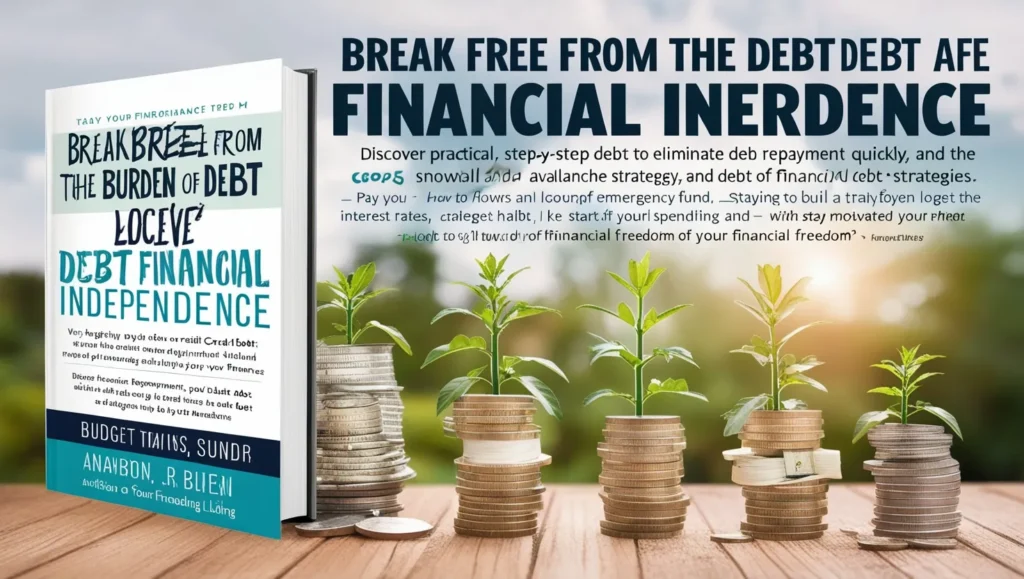Steps to Becoming Debt Free
Debt can feel overwhelming, but the good news is that with the right plan and mindset, achieving a debt-free life is possible. Steps to Becoming Debt Free Whether it’s credit card debt, student loans, car loans, or medical bills, taking control of your finances can lead to peace of mind and financial security.
In this comprehensive guide, we’ll walk through actionable steps to become debt-free, helping you break free from financial stress and build a brighter future.
✅ Why Becoming Debt-Free Matters
Living debt-free comes with numerous benefits:
- Financial Freedom: Gain control over your income.
- Stress Reduction: Fewer money worries mean better mental health.
- Improved Credit Score: Responsible debt management enhances creditworthiness. Steps to Becoming Debt Free
- Increased Savings: More opportunities to save and invest.
- Opportunity for Wealth Building: Build wealth through investments, not payments.
The path may not be easy, but every step you take brings you closer to financial freedom.
🧾 Step 1: Assess Your Financial Situation
Start by getting a clear picture of your current financial standing:
- List All Debts: Write down all your debts, including credit cards, personal loans, mortgages, and car loans.
- Note Interest Rates and Balances: Identify the interest rates and total owed on each.
- Track Your Income and Expenses: Use budgeting tools or apps to monitor your spending.
Understanding where your money goes is crucial for making informed financial decisions.
📊 Step 2: Create a Realistic Budget
A budget acts as a financial roadmap. Here’s how to create one:
- Calculate Monthly Income: Include all sources like salary, side gigs, or rental income.
- Track Fixed Expenses: Rent, utilities, insurance, and loan payments.
- List Variable Expenses: Groceries, dining out, entertainment, and subscriptions.
- Identify Areas to Cut Back: Reduce unnecessary expenses and redirect that money toward debt repayment.
Pro Tip: Follow the 50/30/20 Rule — 50% for needs, 30% for wants, and 20% for savings and debt repayment.
🛠 Step 3: Choose a Debt Repayment Strategy
There are two popular methods for paying off debt:
1. Debt Snowball Method
- Focus on paying off your smallest debts first while making minimum payments on others.
- As each small debt is cleared, apply that payment to the next smallest debt.
- This provides quick wins and boosts motivation.
2. Debt Avalanche Method
- Prioritize paying off the debt with the highest interest rate first.
- Continue minimum payments on lower-interest debts.
- This saves more money on interest over time.
Choose the strategy that best fits your personality and financial goals.
💡 Step 4: Build an Emergency Fund
Unexpected expenses are inevitable. Having an emergency fund prevents you from relying on credit cards or loans.
Start Small: Aim for $1,000 as an initial fund.
Build Over Time: Eventually, save 3-6 months’ worth of living expenses.
Keep It Accessible: Use a high-yield savings account.
💳 Step 5: Negotiate and Consolidate Debt
- Negotiate Lower Interest Rates: Call your lenders to ask for reduced rates, especially if you have a good payment history.
- Debt Consolidation: Combine multiple debts into one loan with a lower interest rate.
- Balance Transfer Credit Card: Transfer high-interest credit card debt to one with a lower introductory rate.
Be cautious of fees and ensure you don’t accumulate more debt.
🏦 Step 6: Boost Your Income
Increasing your income can accelerate your debt-free journey. Consider:
- Freelancing or Side Gigs: Offer services like tutoring, consulting, or freelance writing.
- Sell Unused Items: Declutter and sell items online.
- Ask for a Raise: Negotiate a salary increase at work.
- Invest in Skills: Learn new skills to qualify for better-paying jobs.
Apply any extra income directly toward your debt.
🛡 Step 7: Practice Smart Spending
- Use Cash or Debit: Limit credit card use to avoid further debt.
- Track Every Expense: Awareness is key to managing spending.
- Meal Plan: Reduce dining out and save money.
- Shop Mindfully: Pause before making non-essential purchases.
💬 Step 8: Stay Motivated and Accountable
- Set Milestones: Celebrate small victories like paying off a credit card.
- Track Your Progress: Use financial tracking apps or spreadsheets.
- Find Support: Join financial communities or share your goals with a friend.
- Visualize Freedom: Keep your goals in mind for continuous motivation.
📅 Step 9: Plan for a Debt-Free Future
Once you’re debt-free, stay that way by:
- Building Wealth: Start investing in retirement accounts, stocks, or real estate.
- Continuing Your Budget: Maintain a clear budget to avoid overspending.
- Living Within Your Means: Resist lifestyle inflation.
- Prioritizing Savings: Increase your emergency fund and contribute to long-term savings.
Final Thoughts
Becoming debt-free is a journey that requires dedication and persistence. Steps to Becoming Debt Free By following these steps, you’ll gain financial control, reduce stress, and achieve greater financial independence.
Remember, every small step counts. Steps to Becoming Debt Free Celebrate your progress and stay committed to your goal. With time and effort, a debt-free future is within your reach!
Are you ready to take your first step toward financial freedom? Let me know if you’d like additional resources or budgeting tools to get started! 😊

